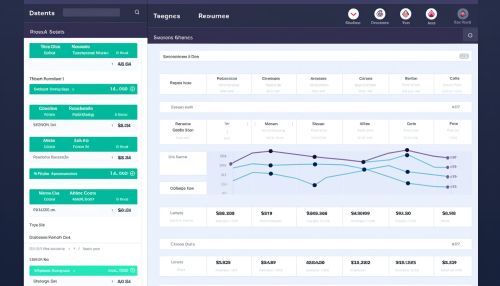NoSQL
Overview
NoSQL, short for "Not Only SQL", is a term used to describe a new generation of database management systems that do not adhere to the traditional RDBMS model. These systems are designed to handle large volumes of data that may not fit well in a traditional relational model, and they often employ a variety of data models, including document, graph, key-value, in-memory, and search.


History
The term "NoSQL" was first used in 1998 by Carlo Strozzi to name his open source relational database that did not use SQL. However, the modern concept of NoSQL, referring to non-relational databases, began to gain popularity in the late 2000s as companies like Google, Amazon, and Facebook dealt with unprecedented amounts of data. These companies needed a way to store and retrieve massive amounts of data in a way that was scalable and reliable, leading to the development of NoSQL databases.
Types of NoSQL Databases
There are four primary types of NoSQL databases: document databases, key-value stores, column stores, and graph databases. Each type has its own specific use cases and advantages.
Document Databases
Document databases store data in a document-like format, typically JSON. They are designed to store, retrieve, and manage document-oriented information. Examples of document databases include MongoDB and CouchDB.
Key-Value Stores
Key-value stores are the simplest type of NoSQL database. Every single item in the database is stored as an attribute name, or key, together with its value. Examples of key-value stores include Redis and DynamoDB.
Column Stores
Column stores store data in columns rather than rows. This can allow for greater efficiency when querying large amounts of data. Examples of column stores include Cassandra and HBase.
Graph Databases
Graph databases are designed to store data that is best represented as a graph, where elements are interconnected with an arbitrary number of relationships between them. Examples of graph databases include Neo4j and Amazon Neptune.
Advantages of NoSQL
NoSQL databases offer several advantages over traditional relational databases. These include scalability, flexibility, and performance.
Scalability
NoSQL databases are designed to scale out by distributing the data across many servers. This makes it easier to increase capacity by adding more servers, rather than upgrading to a more powerful server as you would with a relational database.
Flexibility
NoSQL databases typically do not require a fixed schema, allowing you to add data on the fly. This flexibility can make it easier to adapt to changing requirements.
Performance
NoSQL databases can provide faster performance for certain types of workloads, particularly those involving large amounts of data or high levels of concurrency.
Disadvantages of NoSQL
Despite their advantages, NoSQL databases also have some disadvantages. These include a lack of standardization, complexity, and potential issues with data consistency.
Lack of Standardization
Unlike SQL, there is no single standard for NoSQL. This means that different databases may use different query languages, which can make it more difficult to switch between databases or use multiple databases.
Complexity
NoSQL databases can be more complex to use and manage than relational databases. They often require a deeper understanding of the data and how it is stored and retrieved.
Data Consistency
Many NoSQL databases use eventual consistency, which means that updates to the database may not be immediately visible to all users. This can lead to potential inconsistencies in the data.
Conclusion
NoSQL databases offer a powerful alternative to traditional relational databases, particularly for handling large amounts of data or highly distributed environments. However, they also come with their own set of challenges and complexities. As with any technology, it's important to understand the strengths and weaknesses of NoSQL databases and to choose the right tool for the job.
